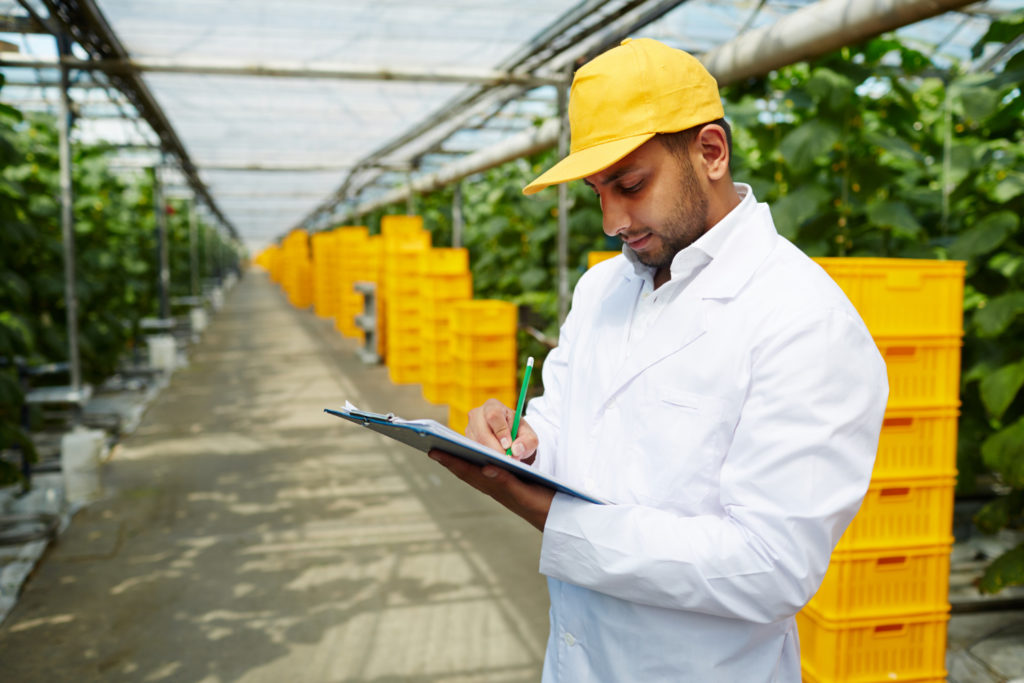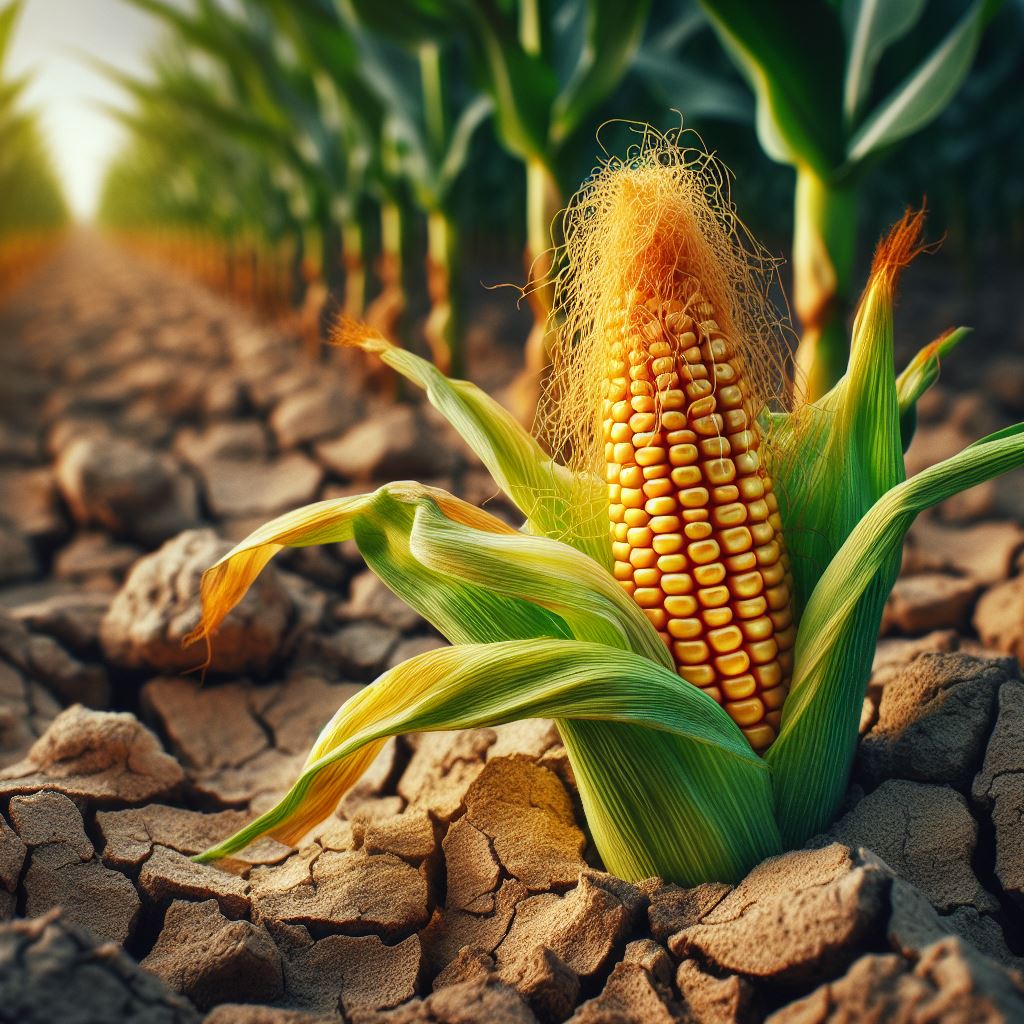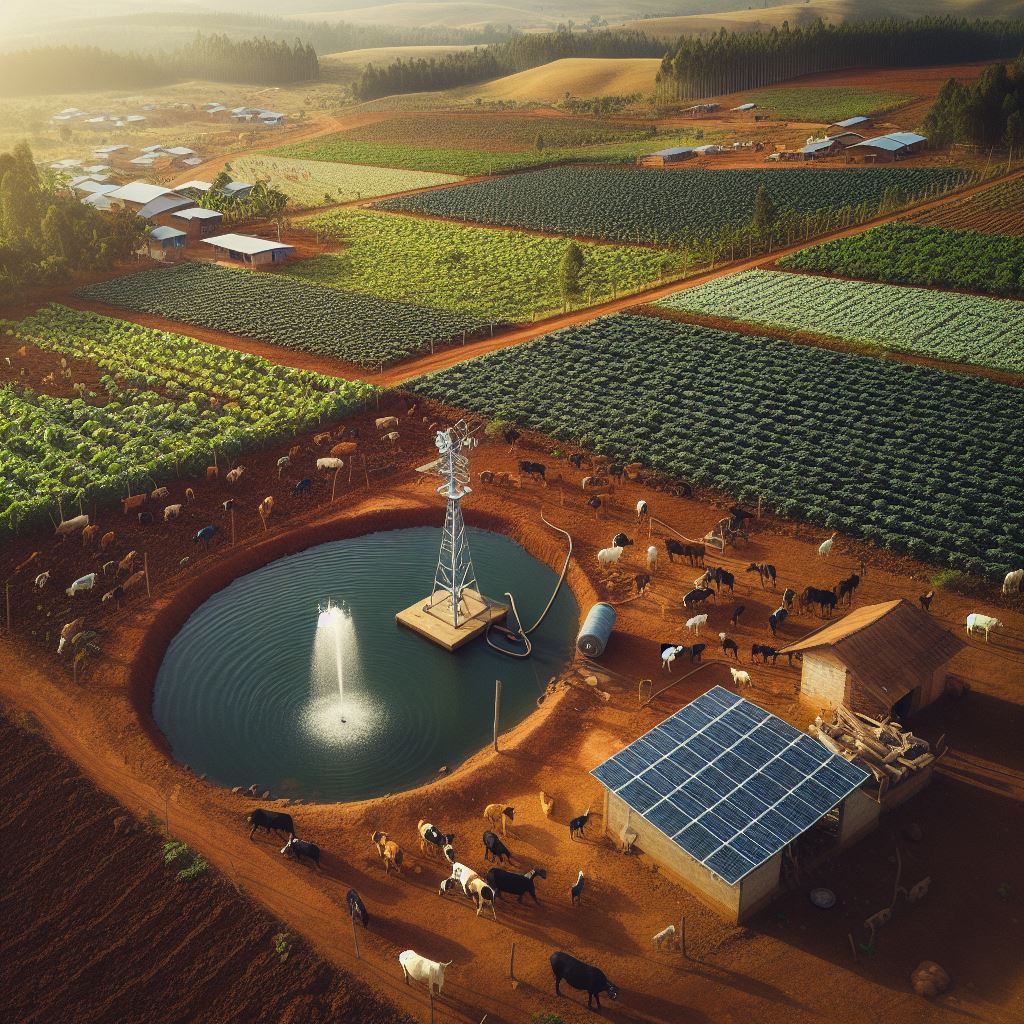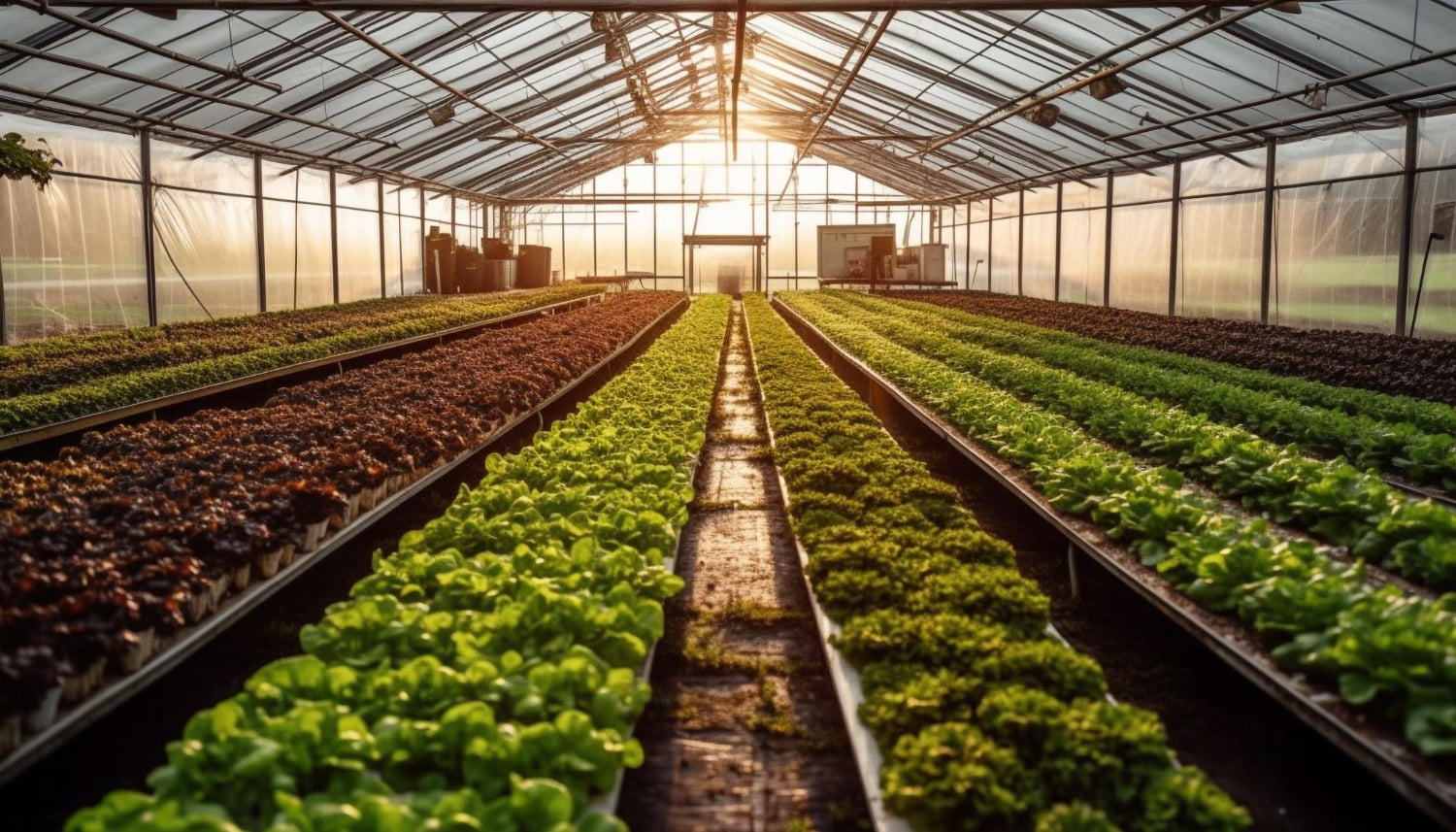Introduction
Global food security is a critical challenge affecting millions worldwide, particularly in developing regions. Defined by the World Food Programme as access to sufficient, safe, and nutritious food, sustainable agriculture emerges as a key solution. It aims to meet present and future needs while safeguarding natural resources and improving farmers’ and consumers’ well-being. Within this context, sustainable agriculture innovations—categorized into four types by AgriLinks—offer promising solutions to enhance food security by optimizing agricultural practices and technologies.

Food security is a global challenge that affects millions of people, especially in developing regions. According to the World Food Programme, about 690 million people suffer from chronic hunger, and about 135 million people face acute food insecurity. Food security is defined as the situation when all people, at all times, have physical, social, and economic access to sufficient, safe, and nutritious food that meets their dietary needs and food preferences for an active and healthy life. Food security depends on four dimensions: availability, access, utilization, and stability.
Sustainable agriculture is a key strategy to achieve food security, as it aims to produce enough food for the present and future generations while preserving the natural resources and the environment and enhancing the social and economic well-being of the farmers and the consumers. Sustainable agriculture involves the adoption and promotion of various practices and technologies that can increase the productivity and resilience of agricultural systems, reduce environmental impacts and risks, and improve the quality and safety of food products.
Sustainable agriculture innovations are the new and creative solutions that can address the food security challenges, by improving the efficiency and effectiveness of sustainable agriculture practices and technologies. Sustainable agriculture innovations can be classified into four categories, according to the AgriLinks framework.
- Production innovations: These are the innovations that can improve the yield and quality of the crops, livestock, and fisheries, by using improved seeds, breeds, feeds, fertilizers, pesticides, and other inputs, and by applying climate-smart, regenerative, and vertical farming methods.
- Post-harvest innovations: These are the innovations that can reduce the loss and waste of food products, by using better storage, processing, packaging, and transportation methods, and by applying digital and data-driven solutions for tracking and tracing food products along the supply chain.
- Market innovations: These are the innovations that can increase the access and affordability of food products, by using better marketing, pricing, and distribution methods, and by applying digital and data-driven solutions for connecting and matching the supply and demand of food products.
- Policy innovations: These are the innovations that can create and enable a conducive and supportive environment for sustainable agriculture practices and technologies, by using better laws, regulations, standards, and incentives, and by applying participatory and inclusive approaches for engaging and empowering the stakeholders.
Production Innovations and Their Impacts on Food Security
Production innovations are the innovations that can improve the yield and quality of the crops, livestock, and fisheries, by using improved inputs and methods. Some examples of the production innovations and their impacts on food security are:
Drought-tolerant maize:

This is an innovation that involves the development and dissemination of improved maize varieties that can withstand drought stress and produce higher yields. This innovation was developed by the International Maize and Wheat Improvement Center (CIMMYT) and the International Institute of Tropical Agriculture (IITA), in collaboration with national research institutes and seed companies, under the Drought Tolerant Maize for Africa (DTMA) project. This innovation has been adopted by more than 6 million smallholder farmers in 13 countries in sub-Saharan Africa and has increased their maize yields by 20-30%, and their incomes by 10-34%, while reducing their vulnerability to climate change and food insecurity.
Biofortified crops:
This is an innovation that involves the development and dissemination of improved crop varieties that have higher levels of micronutrients, such as iron, zinc, and vitamin A, that are essential for human health and nutrition. This innovation was developed by the International Center for Tropical Agriculture (CIAT) and the International Potato Center (CIP), in collaboration with national research institutes and partners, under the HarvestPlus program. This innovation has been adopted by more than 10 million smallholder farmers and consumers in more than 30 countries, and has improved their micronutrient intake and status, and reduced their risk of malnutrition and related diseases.

Solar irrigation pumps:

This is an innovation that involves the use of solar-powered pumps that can extract groundwater and irrigate crops, without relying on fossil fuels or grid electricity. This innovation was developed and promoted by the International Water Management Institute (IWMI) and the Nepal Agricultural Research Council (NARC), in collaboration with local entrepreneurs and farmers, under the Solar Irrigation for Agricultural Resilience (SoLAR) project. This innovation has been adopted by more than 1,000 smallholder farmers in the Terai region of Nepal, and has increased their crop production and diversification, and enhanced their resilience to drought and climate variability.
Post-Harvest Innovations and Their Impacts on Food Security
Post-harvest innovations are the innovations that can reduce the loss and waste of the food products, by using better methods and solutions. Some examples of the post-harvest innovations and their impacts on food security are:
- Hermetic storage bags: This is an innovation that involves the use of airtight and moisture-proof bags that can store grains and seeds, without the need for chemical treatments or refrigeration. This innovation was developed and distributed by the Purdue Improved Crop Storage (PICS) project, in collaboration with local partners and farmers, in various countries in sub-Saharan Africa and Asia. This innovation has been adopted by more than 10 million smallholder farmers and traders, and has reduced their post-harvest losses by 98%, and increased their food availability and income by 25-50%, while improving their food quality and safety.
- Solar dryers: This is an innovation that involves the use of solar-powered devices that can dry fruits, vegetables, and other perishable products, without relying on fossil fuels or grid electricity. This innovation was developed and implemented by the International Centre for Integrated Mountain Development (ICIMOD) and the Nepal Academy of Science and Technology (NAST), in collaboration with local communities and entrepreneurs, in the mountain regions of Nepal. This innovation has been adopted by more than 500 smallholder farmers and processors, and has reduced their post-harvest losses by 80%, and increased their food preservation and value addition by 50-100%, while enhancing their food quality and safety.
- Blockchain traceability: This is an innovation that involves the use of blockchain technology, which is a distributed ledger system that can record and verify transactions, to track and trace the food products along the supply chain, from the farm to the fork. This innovation was developed and applied by various actors and initiatives, such as the World Food Programme (WFP), the International Trade Centre (ITC), and the Food Trust platform, in various countries and contexts. This innovation has improved the transparency and accountability of the food supply chain, and reduced the risk of fraud and contamination, while increasing the efficiency and reliability of the food delivery.
Market Innovations and Their Impacts on Food Security
Market innovations are the innovations that can increase the access and affordability of the food products, by using better methods and solutions. Some examples of the market innovations and their impacts on food security are:
- Mobile money: This is an innovation that involves the use of mobile phones and networks to send and receive money, without the need for bank accounts or physical cash. This innovation was developed and popularized by various actors and platforms, such as M-Pesa, bKash, and Orange Money, in various countries and regions, especially in sub-Saharan Africa and South Asia. This innovation has increased the financial inclusion and empowerment of millions of smallholder farmers and consumers and enabled them to access and afford food products and services while reducing transaction costs and risks.
- E-commerce: This is an innovation that involves the use of online platforms and applications to buy and sell food products, without the need for physical markets or intermediaries. This innovation was developed and expanded by various actors and platforms, such as Alibaba, Amazon, and Jumia, in various countries and regions, especially in China, India, and Africa. This innovation has increased the market access and opportunities for millions of smallholder farmers and consumers and enabled them to access and afford food products and services while increasing market efficiency and competitiveness.
- Digital extension: This is an innovation that involves the use of digital tools and channels, such as mobile phones, radios, televisions, and social media, to provide agricultural information and advice, without the need for physical visits or meetings. This innovation was developed and delivered by various actors and initiatives, such as Digital Green, Farm Radio International, and Plantwise, in various countries and regions, especially in sub-Saharan Africa and Asia. This innovation has increased the agricultural knowledge and skills of millions of smallholder farmers and consumers and enabled them to access and adopt the best practices and technologies for food production and consumption while improving agricultural productivity and quality.
Policy Innovations and Their Impacts on Food Security
- Investment in Smallholder Farmers: Policies focusing on supporting smallholder farmers through access to resources, technology, education, and markets can profoundly impact food security. These policies might include financial incentives, subsidized resources, and training programs tailored to improve agricultural productivity and sustainability among small-scale farmers.
- Market and Trade Policies: Implementing policies that facilitate fair trade practices, reduce trade barriers, and ensure equitable market access for farmers, especially in developing regions, can enhance food security. These policies could involve tariff reductions, streamlined regulations, and support for local markets to bolster food availability and accessibility.
- Sustainable Agriculture Policies: Governments can promote sustainable agricultural practices through policies that incentivize environmentally friendly farming methods, such as agroecology, crop diversification, water conservation, and reduced chemical usage. These policies aim to enhance food production while minimizing environmental impact, contributing to long-term food security.
Conclusion
In the face of staggering global hunger statistics, addressing food security remains an imperative challenge. Sustainable agriculture stands as a beacon of hope, offering a multifaceted solution. By embracing innovative practices and technologies, we pave the way for a more resilient food system. As we navigate the complexities of availability, access, utilization, and stability, the importance of sustainable agricultural innovations becomes increasingly evident. To achieve lasting food security, it’s essential to continue fostering these advancements, ensuring they not only enhance productivity and quality but also safeguard our environment and promote the well-being of farmers and consumers alike.
Further Reading
- Food security and nutrition and sustainable agriculture
- Agribusiness innovation can improve global food security | World …
- The Role of AI in Enhancing Eco-Friendly Practices Across Industries
- Unraveling the Depths: The Intricate Interplay of Climate Change, Ocean Microbes, and Greenhouse Gas Dynamics
